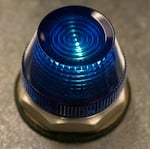The other night, my Indigo's power supply let out magic smoke while I was listening to a few mp3s on it and cleaning my room. Some how it kept running, but I flipped the switch to prevent any more damage. It was very upsetting since I really have come to love the thing; thankfully I had a spare PSU. Anyway, I pulled out the bad one and opened it up to look at the damage. It looks like one of the diodes (?) cracked or split open and shorted, causing the component and leads to melt and char a bit.
I think simply replacing the component would give it new life, at least for a few years, but I do not have an EE background -- I know these questions are difficult to answer but would replacing the component be enough? Or is this an indicator of a much bigger problem? What are common points of failures in Indigo power supplies?
Also, after some searching around on this forum, I came across a few very old threads where people mentioned fitting regular AT or ATX power supplies into the Indigo power supply chassis. I am very interested but the website they were referencing appears to be down. Does anyone have a copy of the guide by any chance? And can anyone vouch for this mod?
Thanks!
I think simply replacing the component would give it new life, at least for a few years, but I do not have an EE background -- I know these questions are difficult to answer but would replacing the component be enough? Or is this an indicator of a much bigger problem? What are common points of failures in Indigo power supplies?
Also, after some searching around on this forum, I came across a few very old threads where people mentioned fitting regular AT or ATX power supplies into the Indigo power supply chassis. I am very interested but the website they were referencing appears to be down. Does anyone have a copy of the guide by any chance? And can anyone vouch for this mod?
Thanks!
_________________





















